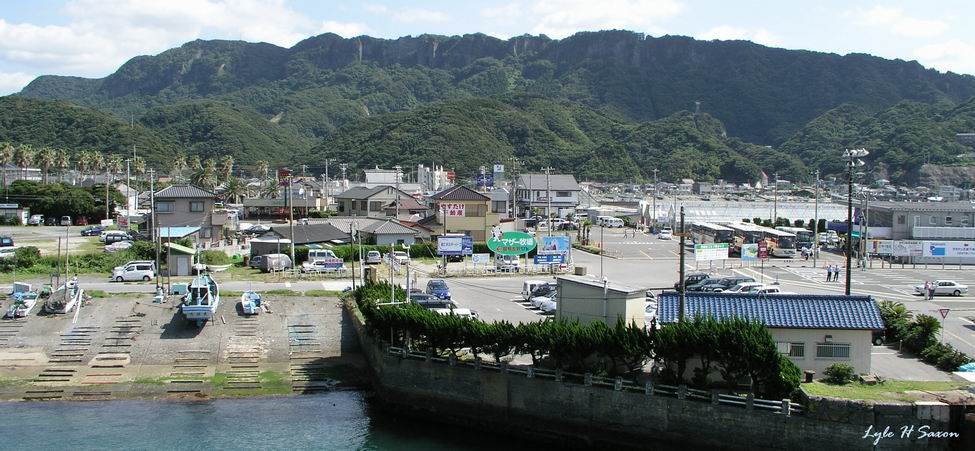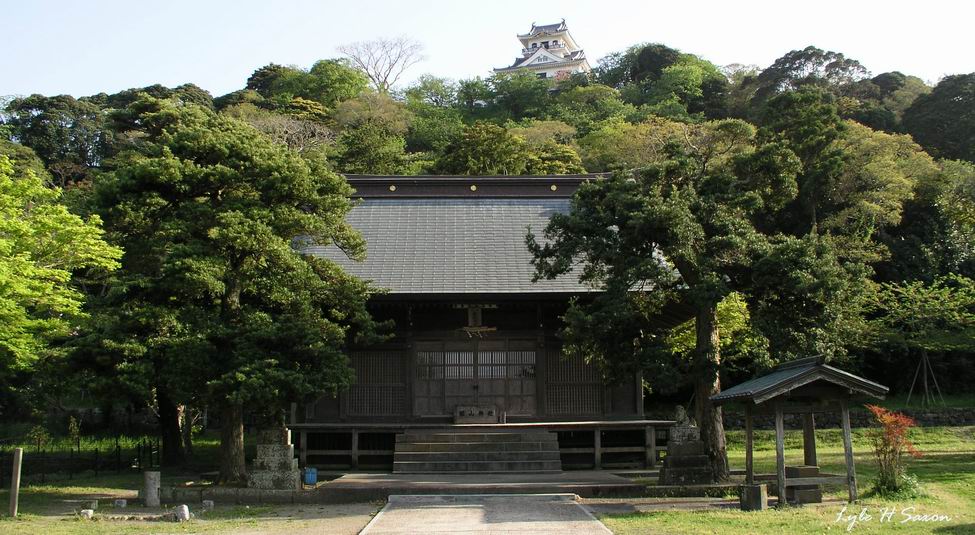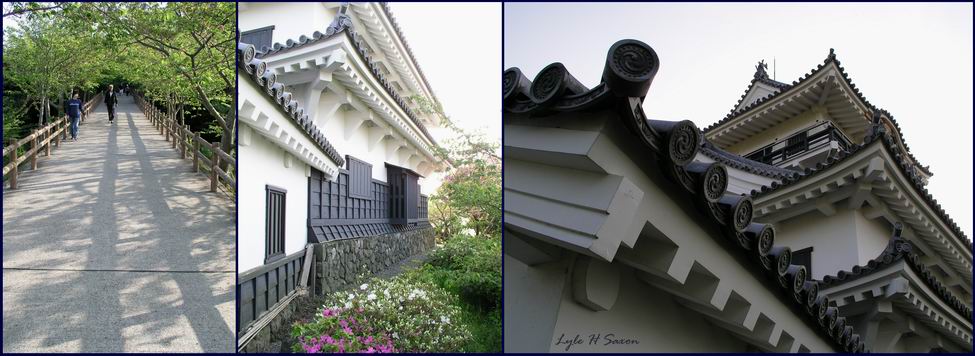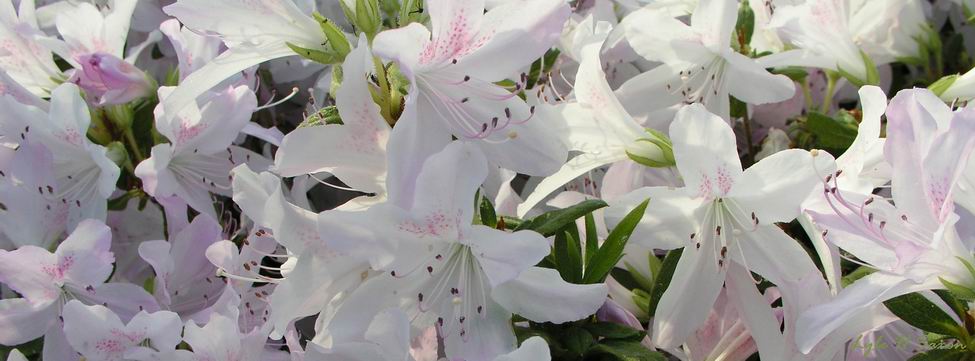| Boso Peninsula - Crossing Tokyo Bay & Train to
Tateyama (Page-3) 1, 2, 3, 4, 5, 6, 7, 8, 9 From the shore, the bay just looks like a lot of water, but from the deck of the ferry - with a sea breeze blowing and among the many boats and ships out on the water - it's a completely different feeling. Reaching the other side.... Disembarking from the ferry, there is a ropeway about a ten-minute walk away that goes to the top of 329-meter Mount Nokogiri ("nokogiri" means "sawtooth", as the top of the mountain resembles a saw when viewed from the side - see above). From the top are views of the coastline and Tokyo Bay, with Tokyo just visible across the huge bay. Incidentally, Mt. Nokogiri is not a natural formation, but is the result of the mountain formerly being the source of "Boshu stone" up until around 1982. (The stone used in the western houses of Yokohama in the 19th century is reported to have come from here, ferried across the bay by boat.) Within about a fifteen minute walk from the top of Mr. Nokogiri is the Nihonji Temple and the largest Buddha statue in Japan, with a height of 31.05 meters (see photo on Boso Peninsula index page). In contrast, the Kamakura Buddha statue is 13.35 meters and the Todaiji Buddha in Nara is 18.18 meters. (Note: The Todaiji Buddha is the tallest bronze Buddha statue in Japan, while the Nihonji Temple Buddha is carved from stone.) On the trip I took these pictures on, I wanted to see more of the coast, so I skipped Mt. Nokogiri and went straight to the train station instead, where I caught a train down the coast to Tateyama. (I visited the Boso Peninsula several times though, and went to the top of Mt. Nokogiri on a subsequent trip.) This type of train car (left, above) is getting pretty old - and has been (sadly) replaced on most lines with a newer type. It won't be long before these are gone as well. I like the old trains a lot better than the new ones. The new ones are lighter (aluminum), with better sealed windows that save energy and semi-asphyxiate the poor passengers. What else... they have nice looking seats made of synthetic materials that smell like chemicals, and the ceiling is loaded with brighter lighting. It's the curse of our times - sealed spaces that save energy, people overblasted with too much light, and air full of synthetic fumes. New designs seem to be for machines and not for people.... The old trains have rattling windows that let air (and oxygen) into the train; the older interiors don't smell... new... and - best of all - all the windows can be opened, and not just from the top, but from the bottom, or both sections slid up towards the ceiling to create one huge open space (not possible on newer trains due to safely reasons no doubt).... Tateyama is generally the last stop for the Uchibori Line trains, usually requiring a transfer to continue down the peninsula. On the day these pictures were taken, I got off the train here and walked over to the beach. In contrast with my displeasure over the sealed air in many new trains, I prefer the newer train stations in most cases, although really old stations are interesting in a historical sense. The ocean currents from the south make the peninsula a little warmer than inland. The photo on the left above would have a lot more people in the summer.... Manhole covers have gotten quite interesting (above) just about everywhere. Some of them are even colorful! The street on the left (above) - keep in mind that there are the magical streets of old and new, and then there are the regular streets that could belong to just about any country. Nearing Tateyama Castle (top of photo below), there is a park that you walk through on the way up to the castle - which dates back to 1590, although the original castle was destroyed in 1614, and the current building was constructed in 1982. It's a pleasant walk up to the top; flower-lovers will find plenty to look at; and there's a museum in the castle building. It was nice enough on top that I stayed there for awhile, taking pictures, looking at the scenery, and watching the sun sink into the ocean.... Copyright 2006, by Lyle (Hiroshi) Saxon, Images Through Glass, Tokyo |











